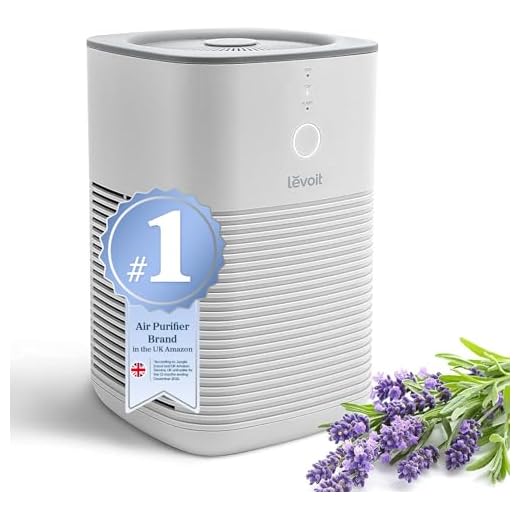




It’s entirely possible to experience adverse reactions to certain breeds or individual canines. My own journey began when I adopted a charming Golden Retriever named Max. At first glance, he seemed perfect, but soon I noticed sneezing fits and itchy eyes whenever I was around him. This made me question whether my response was linked to him specifically.
Research indicates that the proteins found in the skin, saliva, and urine of some breeds can trigger sensitivities. For instance, breeds like Poodles or Bichon Frises, known for their lower shedding, may produce fewer allergens. This was a game changer for me when I started looking for alternatives that might not provoke the same reaction.
To determine if a particular canine is the culprit behind your symptoms, consider spending time with them before making any commitments. Visiting shelters or pet stores allows for controlled interactions, helping to identify if a negative reaction occurs. Keeping a diary of symptoms can also assist in pinpointing specific triggers and facilitate conversations with medical professionals.
If faced with reactions, consulting with an allergist can provide tailored advice, including potential treatments or lifestyle adjustments. For me, incorporating air purifiers and regular grooming for Max significantly reduced my discomfort, allowing us to enjoy our time together without constant sneezing.
Understanding Reactions to Individual Canines
It’s entirely possible to experience a reaction to one particular canine while remaining unaffected by others. This phenomenon often occurs due to the unique proteins and allergens produced by different breeds or even within the same breed. For instance, some individuals may find themselves sneezing or developing skin irritations only around a certain furry friend, despite having interacted comfortably with various other pooches. This can be linked to the specific proteins in that dog’s saliva, urine, or dander.
Identifying the Culprit
To determine whether a certain canine is the source of discomfort, consider spending time with that particular animal in a controlled environment. Observe any symptoms that arise and keep track of your reactions. This method can help pinpoint whether the issue lies with that specific pet. Additionally, consulting with an allergist for testing can provide clarity on individual sensitivities.
Mitigation Strategies
If a certain canine triggers adverse reactions, there are strategies to reduce exposure. Regular grooming of the pet can minimise dander spread, while maintaining a clean living space helps limit allergen accumulation. Using air purifiers and frequent vacuuming with HEPA filters can also make a significant difference. Always ensure regular vet check-ups to keep the canine’s health in check, as underlying health issues can sometimes exacerbate allergenic responses.
Ultimately, understanding individual reactions to various canines can enhance the bond between humans and their furry companions, ensuring a comfortable and enjoyable experience for all.
Understanding Dog Allergens and Their Sources
Focusing on the triggers that can cause discomfort is vital. Proteins found in fur, dander, saliva, and urine are the main culprits. These proteins can linger in the environment, making it difficult for sensitive individuals to avoid exposure.
While many think it’s just the fur that causes issues, it’s actually the microscopic particles of skin (dander) that are primarily responsible. Regular grooming and bathing can significantly reduce the amount of dander released into the home. Consider using a vacuum with a HEPA filter to capture these allergens effectively.
Another source of irritation can be the proteins present in saliva. When a furry companion licks itself, the saliva can dry and become airborne. Ensuring your pet has a balanced diet can help reduce the production of these proteins. For example, incorporating the best things to add to your dogs food can promote healthier skin and coat, potentially reducing allergenic reactions.
Lastly, it’s important to note that even after adopting a hypoallergenic breed, some individuals may still react due to the presence of these proteins. Regular cleaning and maintaining a pet-friendly environment can greatly help in managing symptoms.
Identifying Symptoms of Dog Allergies
Recognising the signs of a reaction to canine companions is crucial for managing discomfort. Common indicators include:
- Persistent sneezing or nasal congestion
- Itchy, red, or watery eyes
- Skin irritations or rashes, particularly after contact
- Difficulty breathing or wheezing, especially in enclosed spaces
- Coughing or chest tightness
Observation Techniques
Monitoring symptoms after exposure can clarify if a reaction occurs. Consider these strategies:
- Keep a diary of symptoms linked to time spent with various breeds.
- Note the severity and duration of reactions.
- Track other environmental factors, such as pollen or dust levels.
Seeking Professional Guidance
Consulting a healthcare professional is advisable for accurate diagnosis. They may recommend:
- Skin tests to identify specific allergens
- Blood tests to measure immune responses
- Allergy management plans tailored to individual needs
Being proactive in recognising these signs will aid in creating a comfortable environment for all involved. Understanding personal reactions enhances quality of life with your furry friends.
Testing for Specific Dog Allergies
To determine if a particular canine triggers an adverse reaction, consult an allergist for skin or blood tests. Skin prick tests involve exposing the skin to allergens, observing for reactions. Blood tests measure specific antibodies. Both methods provide insights into sensitivities.
Skin Prick Testing
Skin prick testing is a straightforward procedure. A trained professional places small amounts of potential allergens on the skin’s surface, typically on the forearm or back. If a reaction occurs, such as redness or swelling, it indicates a heightened sensitivity to that allergen.
Blood Testing
Blood tests, like the ImmunoCAP test, evaluate the immune response to various allergens. A blood sample is drawn and analysed for specific immunoglobulin E (IgE) antibodies. This method is beneficial for those with skin conditions or who cannot undergo skin testing.
Regardless of the chosen method, results should be discussed with a healthcare provider to interpret findings accurately. Identifying the precise source of irritation can lead to tailored management strategies, enhancing comfort and wellbeing.
Factors Influencing Dog Allergy Reactions
Environmental conditions play a significant role in the intensity of reactions to canine allergens. Humidity can amplify the presence of allergens in the air, making it essential to monitor indoor moisture levels. Maintaining a humidity level of around 30-50% can help mitigate exposure.
Another key factor is the breed of the animal. Some breeds produce fewer allergens compared to others. For instance, breeds such as Poodle or Bichon Frise are often recommended for individuals with sensitivities due to their lower dander production.
Individual genetic predispositions also significantly affect reactions. The immune system’s response can vary greatly from person to person, making it crucial to understand personal sensitivities through observation and testing.
Diet and grooming habits of the canine companion can also impact allergen levels in the home. Regular bathing and grooming can reduce the amount of dander and saliva that triggers reactions. A schedule of weekly baths, using hypoallergenic shampoos, may provide relief.
| Factor | Impact on Allergy Reactions |
|---|---|
| Humidity Levels | Higher humidity increases airborne allergens. |
| Breed Type | Some breeds produce less dander and saliva. |
| Genetic Predisposition | Individual immune responses vary widely. |
| Grooming Habits | Regular grooming reduces allergen accumulation. |
Lastly, indoor air quality matters. Using HEPA filters in the home can trap airborne particles, including allergens. Regular cleaning and vacuuming with appropriate filters can further reduce exposure. These proactive measures can significantly lessen discomfort and improve quality of life for those sensitive to canine allergens.
Managing Allergic Reactions to Dogs
Implementing thorough cleaning routines reduces airborne irritants. Vacuum carpets and upholstery regularly with a HEPA filter vacuum to capture dander. Mopping hard floors weekly also helps eliminate allergens. Consider using air purifiers equipped with HEPA filters in common areas to enhance air quality.
Designate pet-free zones, particularly in bedrooms. This creates a safe space for rest and recovery. Regular grooming and bathing of your canine companion can also significantly reduce the amount of dander released into the environment. Aim for weekly baths with hypoallergenic shampoos; this not only keeps your pet clean but also diminishes allergen levels.
Medication and Other Treatments
Over-the-counter antihistamines can provide immediate relief from discomfort. For persistent symptoms, speak with a healthcare provider about prescription options or allergy shots that may offer long-term solutions.
Lifestyle Adjustments
Adjusting daily habits can also play a crucial role. Washing hands after interacting with your pet and changing clothes can prevent the spread of allergens. If you enjoy photography, consider investing in the best affordable digital camera for action shots to capture moments with your furry friend without compromising your comfort.
Choosing low-shedding breeds may be beneficial in the long run, as they tend to produce fewer allergens. If adopting is an option, research breeds known for producing less dander.
Choosing Dog Breeds Based on Allergy Sensitivity
Opt for breeds known for lower allergenic potential, such as Poodles, Bichon Frises, and Portuguese Water Dogs. These types produce fewer allergens due to their unique coat structures and lower shedding rates.
Research Breeds with Hypoallergenic Traits
Investigate breeds that are often labelled as hypoallergenic. Here are some popular options:
- Poodle: Available in standard, miniature, and toy sizes, they have a curly coat that traps dander.
- Bichon Frise: Their soft, curly fur does not shed much, reducing airborne allergens.
- Portuguese Water Dog: This breed has a dense, curly coat similar to a Poodle, making it less likely to trigger reactions.
- Shih Tzu: Their long hair can be managed with regular grooming, minimising allergen spread.
Consider Size and Grooming Needs
Smaller breeds might be easier to manage in terms of allergen exposure. Regular grooming is essential for any breed. For example:
- Brush coats frequently to remove loose hair and dander.
- Implement a bathing routine to keep skin and coat clean.
- Invest in air purifiers to help reduce airborne allergens in the home.
When selecting a canine companion, spend time with potential breeds to observe any reactions. This proactive approach can help in making an informed choice that aligns with allergy sensitivities.
Consulting Professionals for Allergy Management
Seek guidance from an allergist or immunologist for tailored strategies to manage reactions. These specialists can conduct tests to pinpoint specific triggers, ensuring a more focused approach to treatment.
Consider allergy shots, or immunotherapy, as a long-term solution. This method gradually desensitises the immune system to allergens, potentially leading to fewer symptoms over time. Discuss this option with your healthcare provider to determine suitability.
Regular consultations with a healthcare professional can help monitor progress and adjust treatment plans as needed. Keeping a symptom diary may assist in identifying patterns and informing your doctor about changes in your condition.
Incorporate environmental controls, such as air purifiers and regular cleaning routines, into your lifestyle. A healthcare expert can provide specific recommendations for products and practices that minimise exposure to allergens.
Stay informed about new research and treatment options by engaging with professionals. They can offer insights into emerging therapies and provide resources for ongoing education about managing reactions effectively.
FAQ:
Can someone be allergic to a specific dog breed?
Yes, a person can be allergic to a specific dog breed. Allergies are often triggered by proteins found in a dog’s skin cells, urine, or saliva. Different breeds produce varying amounts of these proteins. For example, some breeds are known to produce fewer allergens, which may make them more suitable for individuals with allergies. However, an allergy can still develop to a specific dog, regardless of the breed, depending on the individual’s sensitivity to the specific proteins produced by that dog.
What symptoms indicate an allergy to a dog?
Symptoms of a dog allergy can vary from person to person but commonly include sneezing, runny or stuffy nose, itchy or watery eyes, and skin rashes. In more severe cases, individuals may experience asthma-like symptoms, such as wheezing or difficulty breathing. It is important to consult a healthcare professional for a proper diagnosis if you suspect you are allergic to a specific dog, as they can conduct tests to confirm the allergy and suggest appropriate management strategies.
How can I find out if I am allergic to a specific dog?
To determine if you are allergic to a specific dog, you can undergo allergy testing. This may involve a skin prick test, where small amounts of allergens are introduced to your skin to observe for a reaction, or a blood test to measure the presence of specific antibodies. Additionally, spending time with the dog in a controlled environment can help you monitor your symptoms. It is advisable to seek guidance from an allergist to ensure accurate testing and interpretation of results.
Are there dog breeds that are better for allergy sufferers?
Certain dog breeds are often recommended for allergy sufferers due to their lower production of allergens. Breeds like Poodles, Bichon Frises, and Maltese are known for having hair instead of fur, which may trap dander and reduce allergen release. However, no breed is completely hypoallergenic, and individual reactions can still vary. It’s best for potential dog owners with allergies to spend time with different breeds to see how they react before making a decision.









